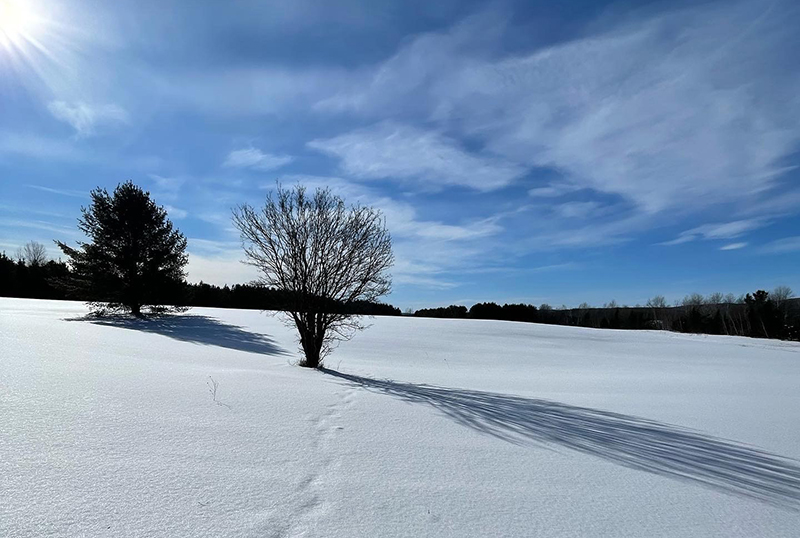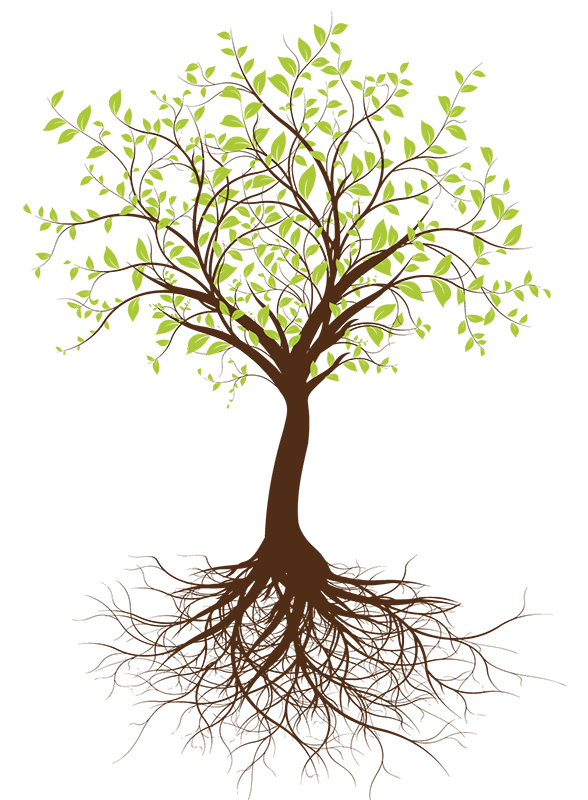Connected

Un texte de Sarah Cobb
Paru dans le numéro Printemps/Spring 2022
Publié le : 9 mars 2022
Dernière mise à jour : 9 mars 2022
Find some trees. Stand among them. Take a deep breath of the fresh air they made and think about the light you can bring to those around you.
Before you know it, the snowdrops will be up. The tiny little green shoots will push themselves through the grainy snow and the droopy white flowers will appear to remind us to keep holding on. When the seed catalogue arrived in late December, spring seemed so far away.
Every year, I count back from the last frost in June to make a calendar of when I can start putting things in the soil and it is never as early as I’d like. Filling the starter pots with moist soil and jabbing a seed or two beneath the surface when there is still snow on the ground seems like such an act of faith. I’m never convinced they’re going to come up and sometimes they don’t. But when they do, the green shoots fill me with hope. Their tenacious drive toward the light reminds me that it is entirely normal for me to feel slow and sleepy in the winter. I may not photosynthesize but there is no doubt that the lack of sunshine has an impact on my well-being.
Dr. Suzanne Simard, a forest ecologist, talks about a moment when she was a child and her dog fell into an outhouse pit. While she and her dad were digging to free her pet, she noticed the ground was interwoven with a mesh of fine threads that seemed to underpin the soil. She learned later that what she was seeing was mycelium, a fungus that colonizes the roots of trees. The trees, with their canopy brushing the sky, use photosynthesis to turn sunlight into sugar, bringing it down from the leaves to the tips of their roots where the mycelium extracts it. The mycelium, in turn, pulls all sorts of nutrients out of the soil to make it available to its host.
This vast web of mycelium, called a mycorrhizal network, allows neighbouring trees to communicate with one another, sending distress signals to warn each other when being attacked by insects and sharing resources with the understory that has less access to light. Mother, or hub, trees, recognize their kin and share nutrients with their offspring. Birches feed firs in the summer and firs return the favour when birches are leafless in spring and fall. Whether it is the trees or the fungi calling the shots is still up in the air. Either way it is an awe-inspiring reminder that Mother Nature’s design favours the health of the collective.
The trees have so much to teach us. In this time of recovery, maybe we all need to think about the people in our lives who may have been stuck in the shade a little too long. Maybe if those of us who have access to resources and enriching experiences shared a little of our abundance, we would all be rewarded with a tighter community of healthier individuals. As Tom Chi said in a Ted talk a friend recently shared: ’’plants are the other half of our lungs on earth.” Go find some trees. Stand among them. Take a deep breath of the fresh air they made and think about the light you can bring to those around you.
Sarah Cobb


